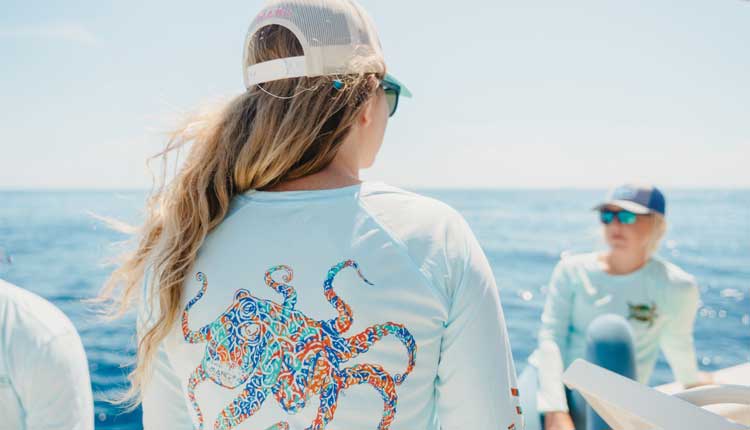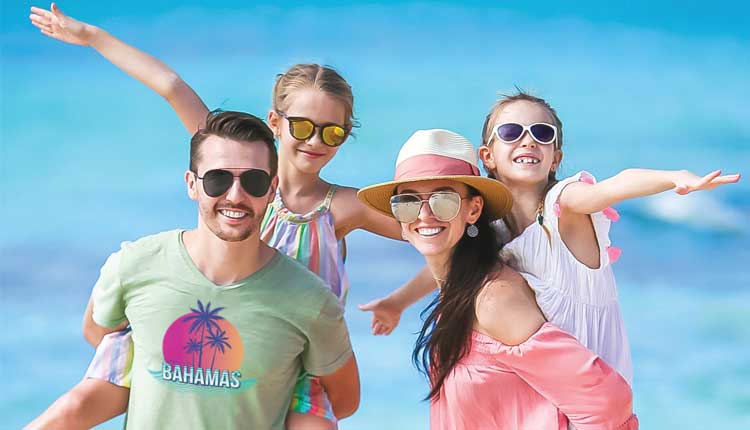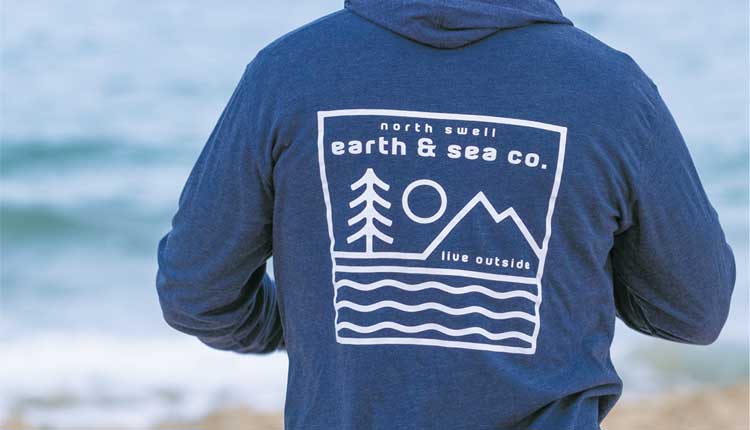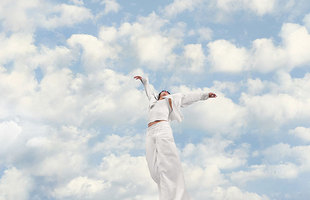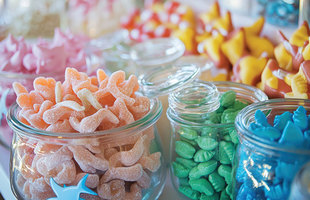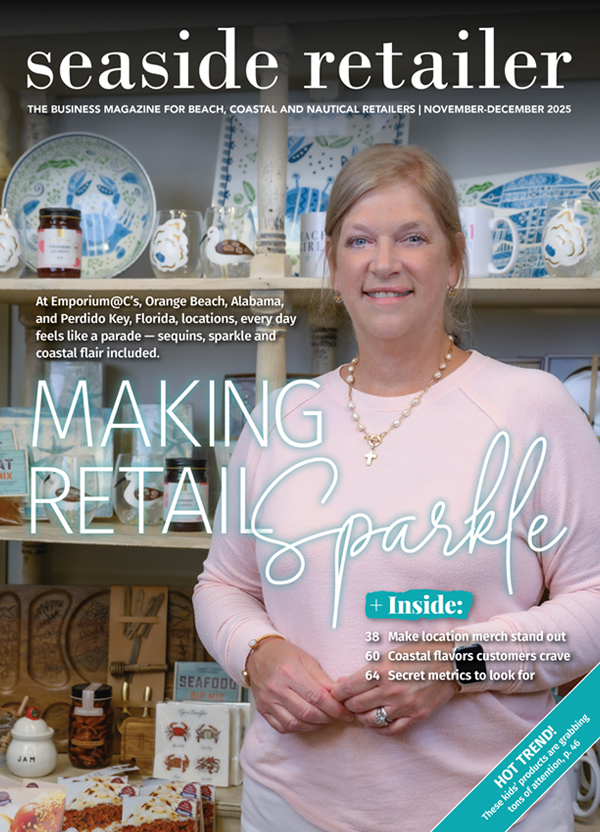Laid back beach vibes are one of the many reasons visitors find themselves in your seaside town. Chances are, they want to embrace that style in the wardrobe they choose while enjoying their stay. They may even want to remind themselves of their time at the coast by taking back a T-shirt or sundress they find in your store to wear at home. And comfort is still key. Ever since people became accustomed to comfort during the pandemic, there’s been no turning back.
“For 2023, people are looking for clothing that is both practical and comfortable,” says Kim Jones, owner of lifestyle apparel brand Tropical Vibes. “It’s become more about clothing that protects you and looks good whether you are on the beach or shopping the boardwalk.”
Easy wear for anywhere is what casual apparel is all about, and many coastal shops are expanding their clothing inventory to accommodate a demand for pieces that can go from beach to boardwalk to bistro.
In general, we’re all dressing down a bit more since the pandemic, notices Shelli Maines of performance wear brand It’s The Beach. “With the way the world is, people are not required to dress up as much, so casual apparel is becoming even more popular,” she says. “People want to be comfortable, and our line is something you can literally wear from your bed all the way out to the beach and the dinner table, so it’s very versatile.”
The market for flexible attire continues to expand, with more and more beach brands adding versatile pieces to their collections as consumers gravitate toward casual offerings. Bonus if those apparel pieces feature a location or coastal symbol, and it seems people can’t get enough.
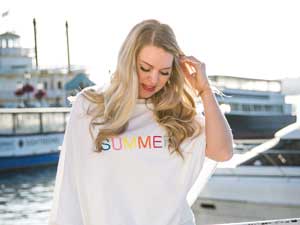
Top it Off Accessories’ easy sizes and seasonal phrases are a hit with shoppers.
“I’m seeing people buy more and more,” says David Hall of Weekend Threads and the It’s Always the Weekend lines of T-shirts and hats. Name-drop items are a go-to for seaside retailers “so casual buyers can take home something to show off where they’ve been,” Hall says. And beachy motifs ranging from the always popular sea turtle to crustaceans, starfish and anchors are mainstays.
“We are excited to just launch a manatee, which is pretty unique, and we introduced a new turtle made up of seashells so it offers a different spin on the typical turtle,” says Rebecca Fordham of Caloosa WaterWear.
There’s no lack of ideas for casual apparel that appeals to customers’ beachy sides. Wholesalers have plenty to offer seaside retailers to help capitalize on the casual trend.
Go with the flow
Flowy tunics that feel like cashmere at appealing prices are a staple for Top It Off Accessories, which started 18 years ago as a homegrown operation creating ribbon belts, headbands and “other things we could make domestically,” says president Karena Rasser. About a decade ago, she went to India and connected with a supplier of finely made, lightweight cotton tunics. Soon, this apparel item became a calling card for the brand.
“Since then, we have done more beach coverups and coastal wear with icons like starfish, seashells and anchors,” Rasser says. The brand is “laser focused” on the East Coast from Maine to the Caribbean, she notes.
The tunics appeal to shoppers ages 30 and older, with mature customers wearing them not just as beach and pool coverups, but with leggings as comfortable loungewear. “They can be worn both ways, which is what people love about it,” Rasser says. “
The benefit of tunics for retailers is the one-size-fits-all cut that does not require a fitting room, according to Rasser. Top It Off Accessories also offers a category sized small-medium and medium-large that is easy for gift and coastal shop owners to sell because these also do not require customers to try them on.
Speaking of versatility, the brand’s travel collection wrinkle-resistant line includes palazzo pants, activewear like skorts, dresses in several different cuts and tops. “We are really proud of that category and it’s coastally inspired,” Rasser says of the floral, palm leaf and anchor prints.
“The biggest trend now we are seeing is having words written on T-shirts, sweatshirts, all different types of apparel that are inspirational or just fun.” – Karena Rasser, Top It Off Accessories
The company has also rolled out some new body forms that Rasser says include “flowy less fitted dresses. That is the trend. and we do not see it disappearing.”
Wearing words
“Local Vibe,” “Lake Life,” “It’s Always the Weekend,” “Love” — the words on apparel is a big deal. Literally. “The biggest trend now we are seeing is having words written on T-shirts, sweatshirts and all different types of apparel that are inspirational or just fun,” Rasser says.
Top It Off adds seasonality to its pieces with Boardwalk Ponchos bearing “Beach” for spring and summer, and winter-time Holly Ponchos decorated with “Merry” or “Believe.”
Weekend Threads is all about spreading the message that every day is a beachy holiday with a message to “live life like it’s always the weekend,” Hall says. “We bring a weekend vibe to the clothing market.”
Namedrop T-shirts are in demand, Hall says, and so is the company’s trademark saying on tops that showcase a range of hobbies, from fishing and boating to just plain lounging on a hammock. “We can use that slogan with a boat, a bicycle, really anything you can think of that makes you think of not working and enjoying life,” he says.
Threads with a theme
Sea turtles, starfish, anchors, crabs, lobsters, lighthouses and palm trees are consistently popular motifs for seaside retailers. Rasser is experimenting with print size. “They used to be very small in scale and we decided to make our prints larger, which completely changes the look of a collection,” she says. “We like to mix things up.”
The brand is attracting buyers who go for a larger floral print with yellows and oranges, which is a step away from the typical color palette, Rasser adds.
Fordham says, “Fish are always important for our category. We are in the process of doing all of the pelagic fish, and we came out with a red fish and a snook.”
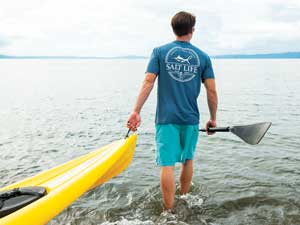
People find their own versions of Salt Life to reflect their water-related interests.
Motifs tend to be regional. A retailer in Hawaii who purchased Caloosa WaterWear pieces selected pineapples, hibiscus and other florals. “In other areas of the country, florals would not sell as well,” Fordham says.
Hall says a fresh lobster boat design will do well with East Coast retailers, while the palm trees and hammock design sells in California.
Overall, coastal motifs are not “crazy trendy,” Fordham notes, meaning they don’t go in and out of style. “We have typical pieces that do well year after year.”
Feel-good fabrics
Moisture-wicking, UPF, wrinkle-resistant and sustainable fabrics are filling racks and shelves in coastal shops as customers seek out materials that are cool, easy-care and protect them from the sun.
It’s the Beach polo shirts are made from 100% recyclable materials. “It’s the beach — and we are trying to keep it clean as much as we can,” Maines says. “With all the plastic waste in the world, I figured we would do what we can to help out in that aspect. And sustainable products are becoming more of a big deal.”
Top It Off offers a fine-gauge knit bamboo line of wraps and ponchos. “It’s lightweight, breathable and people wear it from Maine to Florida all year round,” Rasser says. “The quality is great at an amazing price, and we always keep it in stock because it’s something retailers like to count on.”
Jones is also seeing UPF wear be worn seamlessly from beach to street. “At Tropical Vibes, we’ve elevated sun protection to be comfortable and functional.”
UPF performance wear that is certified by The Skin Cancer Foundation is the mainstay for Mang, a family-owned business that commits to planting one Mangrove tree for every purchase. Kyle Rossin, co-founder and CEO with his brother Keith Rossin, was born and raised a fisherman. He says the clothing is designed for people who love the outdoors, want to enjoy it — and protect themselves from the elements. “All of our gear is designed with that in mind so you can go outside, wear it comfortably and stay cool because they are moisture-wicking and dry very quickly.”
Soft-to-the-touch T-shirts are a priority for customers too, Fordham says. “We specialize in polyester but people always want that cotton hand, so we have a V-neck that is doing incredibly well because of the cotton-poly blend and its wicking capabilities.”
Embracing a lifestyle
Some coastal brands like Salt Life embrace a lifestyle with their performance wear both in the performance fabric that can tolerate harsh conditions on the water and through the designs that appear on the items.
“Our whole goal is to be able to physically show our customers that we are doing good by planting Mangroves.” – Kyle Rossin, Mang
“Salt Life appeals to people in a very personal way,” Salt Life President Jeff Stillwell says. “If you love fishing, that is your version of Salt Life. If you love to dive, surf, chill on the beach, etc., that is what Salt Life is to you.”
In 2021, Salt Life recorded record retail growth and opened new doors in Texas and South Carolina. With the addition of several new stores in 2022, it now operates 20 retail locations in Georgia, Florida, California, South Carolina, Texas, Alabama and Delaware for customers who are trying to live the Salt Life.
Clothing with a cause
Brands tied to a cause that give retailers a story of giving back to share with customers are increasingly important to shoppers to want to put their dollars where they can make a difference. “Having that mission and message helps promote the shop as more ecologically friendly,” Rossin says.
Mang started when Rossin was fishing in a stand of red Mangroves at Vestor Marine Lab in Fort Myers, Florida. He dreamed up a Mangrove camouflage that would help fund planting these important trees to protect coastal ecosystems.
“They are the No. 1 carbon sequestration tree in the world and provide that full linear canopy for birds, an understory for bait fish, a place for oysters to attach to the roots for water filtration — they attract so much life. Anywhere with Mangroves near has more biodiversity and ultimately a healthier ecosystem,” he explains.
Mang will plant more than 150,000 Mangrove trees in 2022. The company partners with Florida restoration groups, municipalities and private residences to find new places to plant. It also runs its own farm and nursery in West Palm Beach, Florida, where it grows 25,000 to 30,000 Mangrove trees at any given time.
Mang built a project in The Bahamas with Bonefish & Tarpon Trust and also works with Bahamas National Trust and Friends of the Environment. And in Madagascar, a project that plants 10,000 trees a month with the help of about 40 employees “keeps up with sales,” Rossin explains. That way the brand can assure retailers and customers that it is accomplishing its goal to “Buy one. Plant one.”
“If you do not have enough time to give in your life, it’s easier for you to make a purchase and give back that way,” Rossin says. “Our whole goal is to be able to physically show our customers that we are doing good by planting Mangroves.”
“Fish are always important for our category. We are in the process of doing all of the pelagic fish, and we came out with a red fish and a snook.” – Rebecca Fordham, Caloosa WaterWear
That’s why Mang provides display pieces that help tell the story, and retailers can select from a signage catalogue. For example, one sign explains: “Since 2015, twin brothers Keith and Kyle Rossin have grown each Mangrove by hand for all of Mang’s Florida planting projects.”
As Mang keeps growing, Rossin says it is not only planting Mangrove forests throughout Florida, but also planting internationally “in an effort to affect positive change in countries and coastlines affected by deforestation and pollution across the globe.”
When retailers can show that they’re thinking about the community and supporting companies that do good, they have a story to tell that resonates with customers. Rossin says, “Having that story is important. It feels good, does good and looks good too.”
Casual apparel may be laid back, but it is also full of possibilities. Your seaside store can be a go-to for comfortable coastal looks and relaxed seaside styles.
